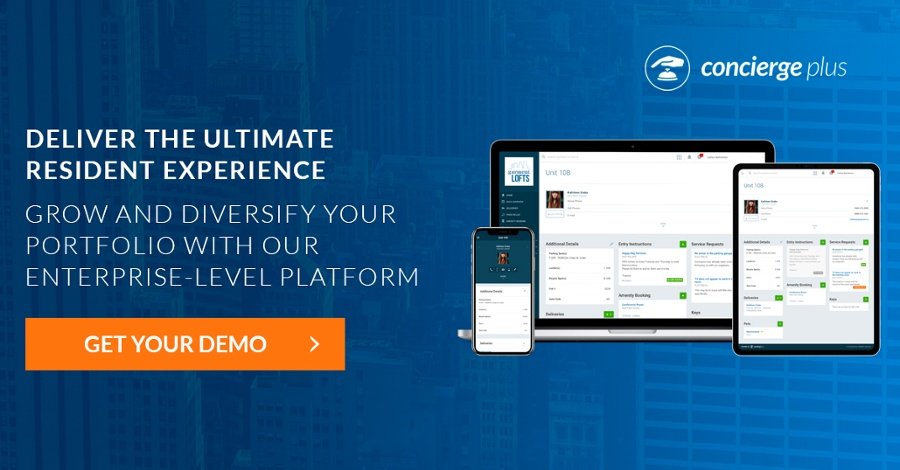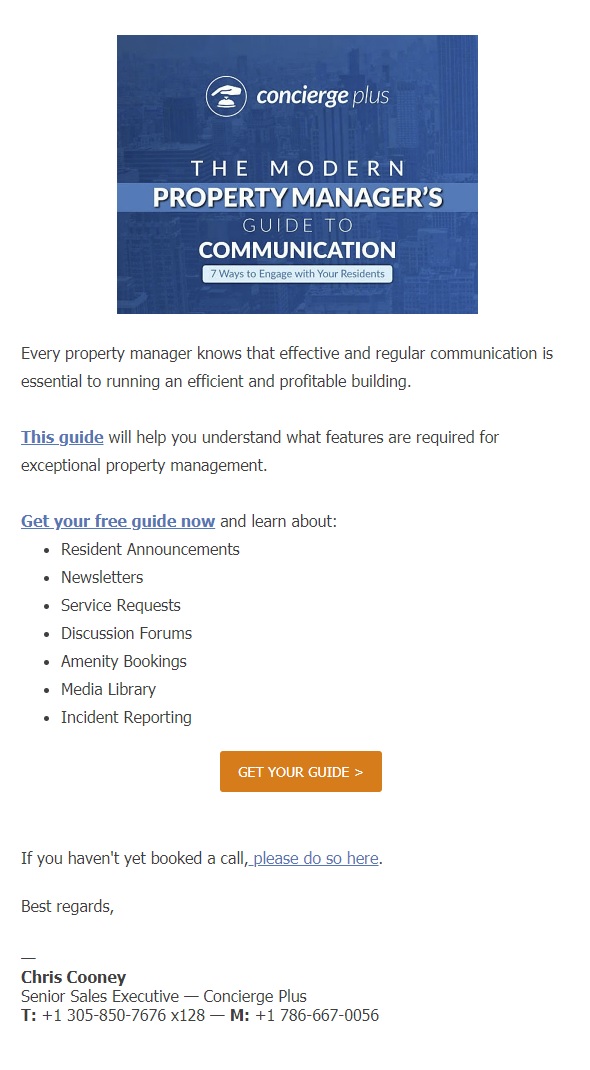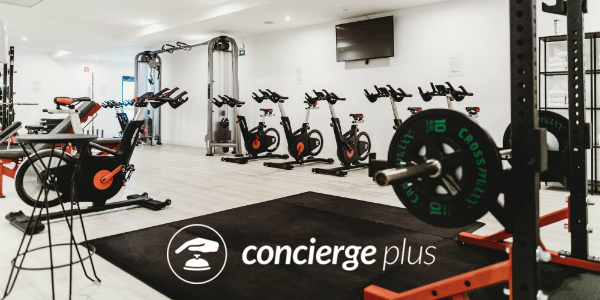7 Tips on Successful Community Association Messaging By Jon Green | March 7, 2022
The daily life of a property or community manager is filled with ever shifting priorities, addressing the urgent needs of residents, board members, and vendors. Does that sound familiar; is that you?
The unfortunate consequence is that drafting and sending effective community-wide announcements may well take a back seat when you are focused on today’s urgencies.
But those communications are vitally important! Those community-wide messages, by definition, touch everyone. Remember this about your residents:
Many residents are media and technically savvy
Your residents are accustomed to receiving professionally produced emails and messages every day at home and at work. Consider these benchmarks: 2 out of 3 Americans age 55+ are members of Amazon Prime, already ordering and streaming online with regularity. And surveys show that tech-savvy millennials are eager to purchase homes and very likely a growing ownership constituency in your community. Regardless of your residents’ age, you must assume they are accustomed to technology and discerning about quality communications.
Residents are financially invested
Year over year the real estate market has been great for sellers but terribly challenging for buyers laboring with increasing prices and shrinking affordability across the US and Canada. The upshot is that homeowners are more invested than ever – and selecting a home in your community came with an expectation that your association will nurture and protect their investment. In their eyes, the messaging you share (or fail to share) with the entire community reflects on the soundness of their investment.

Residents are emotionally invested
It’s someone’s home and community, their place of safety, comfort and joy. The communications you share can amplify or diminish those positive feelings.
In short, your communications matter. The messages you send to all residents influence how they perceive their home, their community – and your management team. Community-wide messaging is your turn to be a positive image setter and you cannot afford to miss that opportunity.
Given that backdrop, here are seven keys for successful communications:
- Create content with care
However important a message may be, you must assume recipients will scan it quickly. If the message warrants further attention, readers might dive in more carefully – but they will probably commit mere seconds to perform that initial scan.
So be concise! Rehearse removing words or even entire sentences. Would that change the content? If not, remove the extraneous verbiage. Make each word count.
Clearly state the subject at the top. Then clearly issue a call to action, typically in the closing. Make sure your draft is crystal clear on each. Here’s why I’m writing and here’s what I want!
Then re-read your draft and ask: Does your message answer every relevant question? Always answer core questions: who, what, when, where, why and how? You are sharing information; do it completely.
Finally, check your tone. Is the message professional and positive? Informality may be appropriate when announcing a community barbecue, but still convey professionalism. And stern reminders may be necessary when residents are required to act, but one can do so in a positive manner that speaks to success rather than failure. Be professional, be positive.
- Polish your brand
Your community may issue a few announcements or a lot. Different strokes for different folks. But whenever you do, brand you messaging to amplify the community’s image.
In most cases, branding means incorporating your logo at the top of each message. Simple to do – and even automatically supported by Concierge Plus.
Then consider adding a tag line to your logo (if space on the logo is an issue, perhaps the tag line could be added to each message’s footer). If the community’s logo is an acronym or similarly abstract, a tag line is a super means to establish or reinforce your identity. Perhaps your community is “The Heart of Houston” or the “Spirit of St Paul.” Have fun deciding who you are and then use your tag line religiously. “Just do it” worked for Nike. A tag line can work for you, too.
Finally, consider how to amplify your brand in each message’s signature or footer. Beyond furthering your community’s brand, the footer can also incorporate links that drive residents directly to your online community calendar or other key features within a dashboard like Concierge Plus. That reinforces the importance and centrality of an online dashboard such as Concierge Plus and, in turn, that behavior will lead to greater satisfaction for residents and efficiency for you. Win/win!
- Set your style
Your messages should adhere to a classy, repeatable style. In the same manner that your content should be uniformly concise, your style should be consistent. too.
Before setting your style, inventory and categorize the types of messages you have sent or intend to send. Determine if you wish to set a single style across all communications or set distinct styles by category. For example, should you have one style to announce social events and another for transmitting board minutes and updates?
Once you decide on your categories, develop a style for each one. To some extent that may be preordained by the communication solution your organization uses. But most contemporary community management platforms enable you to manage font size, font color, and more. Simply put, select appropriate and complementary font sizes and colors for the headlines, sub-headers, and body of your messages.
It may also be worth noting the following norm. From top to bottom of a message, larger fonts generally lead to smaller fonts as one progresses through a message. Think of this hierarchy: headlines, sub-headers, body, and footer will typically use progressively smaller fonts.
For complementary colors, check out guidance on what designers call the color wheel. But the commonsense advice here is: don’t get too busy, don’t get too cute. Complement your branding colors to set an attractive style but keep it simple and professional.
Bullets or ordered lists are great ways to delineate topics and improve readability. You may also wish to use bold and italics to differentiate your call to action or emphasize other content within a message. However, it is best to avoid underlining since that implies the presence of a link in the online world.
Ultimately, your audience will appreciate a simple, clean and consistent style – and you will have an easier time building such a style into your routine.
- Leverage links
Including links can add substantial value for the recipients of your messages. Are you announcing candidates for a board election? Then include a link to their LinkedIn profile so that residents can learn more about them. Are you holding a meeting or event at a remote location? Then include a link with directions.
Once you become accustomed to incorporating links, you’ll find a million and one ways they are beneficial. Also remember to include useful links to your community’s dashboard,
However, be aware that links included in an email can easily be forwarded to any party. If, for example, you are you hosting a Zoom meeting for residents only, be aware that including the Zoom link in an email makes it easy for the community to share that link with non-residents by forwarding. Some solutions explicitly support links within calendar entries, and while that does not fully preclude inappropriate sharing, it does mitigate risk.
- Insert images
Would you try to sell a home without including photos of the property? Would you buy a product online without seeing a photo first? Of course not!
You may not be selling homes or merchandise, but it is a vast understatement to merely say images in message add flair and appeal.
For example, are you reminding residents to leash their dogs? A simple photo can instantly capture their attention and help a reader immediately grasp the subject of the message.

However, be judicious. Do not use too many images. Yes, they are very effective. But do not allow use of too many images to compete with the message itself.Also select images that are relatable. Venues known to your reader are relatable. Are you announcing a new pool policy; include a photo of your pool. Photos of people are relatable. Are you announcing an event? Include a photo of your meeting host, past attendees, or a stock image of people at a similar event.
Remember that it may not be permissible to re-use images you find on the internet. Are you using photos of your community captured from the developer’s website? Then insure you have the developer’s permission to re-use the images(s). Are you using images of residents in the community? Make sure they do not object to your re-use of their likeness.
Stock images are a great resource. Some are free, some are not. For example, Pexels offers free and searchable access to a wealth of images, proclaiming that they may be used for free, without attribution, and may be edited as you wish. Access to other free resources can be found here.
There are also many affordable solutions to access and re-use images. One such service is called SnagIt Assets. This content-rich solution permits you to search, download and use an unlimited number of photographic images, plus access numerous handy symbols, templates and themes for a low annual subscription fee. SnagIt Assets also enables you to seamlessly download images directly into image capture and editing software from the same company that’s called, not surprisingly, SnagIt. That is quite convenient.
In fact, if you send messages with any regularity, obtain and learn image capture and editing software like SnagIt. It has a multitude of benefits, such as re-sizing images, cropping images, superimposing text on an image, or adding borders or special effects. Once you get accustomed to using an image editing tool, you will wonder how you ever did without one.
- Create and test templates
Now that you have taken inventory and established one or more messaging styles, it’s time to create, test and save templates. Templates not only enforce use of the style(s) you create; they also save oodles of time as you churn out new messages!

You could initially create your templates in Google Docs or MS Word, then copy/paste them into your communication platform for new messages. Better yet, create a template using the rich text editor included in a product like Concierge Plus that empowers you to save a template as a draft announcement, then duplicate that template again and again as new messages are needed.
It is vitally important to test your templates. Ensure that messages will look and behave as you wish when a resident sees them via their email application. Frankly, it can be hard to test every scenario, but try to examine the emailed template using popular solutions on both computers and phones such as MS Outlook, Gmail, and Yahoo Mail. Then adjust your template works if you find it works on some platforms but not others.
- Be mindful of quantity vs. quality
A failure to communicate creates a vacuum and, as we know, nature abhors a vacuum. The frequency of communication may vary depending on the nature of your community. But be sure to provide sufficient oxygen. Make it a point to communicate at regular intervals.
Conversely, be wary of inundating residents with messages. If you have a series of small messages that do not warrant individual messages, consider packaging them into a periodic digest that residents can review weekly or monthly. Excessive messaging is akin to a public nuisance and the impact of your messages will be diluted.
For messages that appeal to a limited audience, leverage “group” messaging supported by a solution like Concierge Plus. For example, if you have an active club of yoga enthusiasts, create a yoga group to share messages explicitly with that audience.
Also use and consistently update your community calendar to show yoga and other club events within your community. Make their presence known to the entire community via the calendar but avoid filling residents’ inboxes with a barrage of announcements.
Also consider how you wish to deliver messages. Should they be distributed via email and appear on a public display in your lobby or a clubhouse, too? In fact, remember to refresh messages on your public display monitors. If you fail to update those messages with reasonable frequency, the community will naturally begin to ignore the display and its value will be undermined.
Is your message urgent? Does it warrant text or voice delivery in addition to email? Be prudent but leverage all the tools at your disposal.
We understand that adhering to best practices may take a backseat when we get mired in daily priorities. Our advice is simple. Don’t let that happen to you.

Commit to solid and consistent communication practices. Spend time up front to get setup. Establish your branding. Inventory your messaging. Create your styles. Build re-usable templates. All that enables you to focus on the content of your communications day by day.
The result will be a more efficient workflow for you – and the community will applaud your results and contribution!









